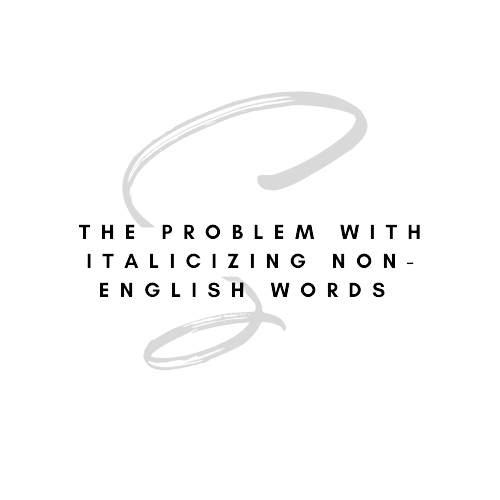The Problem with Italicizing Non-English Words
 What exactly is the problem with italicizing non-English words?
What exactly is the problem with italicizing non-English words?
Currently, debate is ongoing about italicizing non-English words in the writing, editing, and publishing industries.
In particular, in the English-language publishing industries, a great deal of conversation is occurring about whether to italicize words or phrases that may not be familiar to a monolingual, English-language audience.
So, the question remains, should you continue to italicize non-English words?
Many words from various languages that have made it into the English-language lexicon are often no longer italicized or set off as foreign, such as foods. Some examples include burrito, fajita, and quinoa. Other examples of words and phrases from other countries, cultures, and languages that are familiar in the English-speaking world include carte blanche, déjà vu, and bon voyage.
So, should uncommon non-English words be treated in a similar way as common pnes?
Before we continue, let’s take a look at what some popular style guides say.
Setting off Non-English Words in Style Guides
Currently, many of these style guides call for italics or quotation marks when coming across non-English words in text.
For example, the Modern Language Association (MLA) style guide calls for italics for most uncommon non-English words. Similarly, the American Psychological Association (APA) style guide italicizes non-Englih words (the first time) but avoids italics for common ones. While the Chicago Manual of Style also calls for italics, it comes with a caveat. (If the word is used frequently throughout the rest of the document, they recommend only italicizing the first time). Finally, the Associated Press (AP) calls for quotations marks when using non-English words.
Italics or Quotes from an Inclusive Language Perspective
As previously mentioned, at times, editors many not set off certain well-known non-English words, in any way. However, they do place the majority of non-English words not familiar to the target audience in italics or quotation marks.
From an inclusive language perspective, many opponents of italics (and quotation marks) argue that this practice only serves to perpetuate the marginalization of communities, as well as creating an “Other.” In many cases, these words and phrases derive from equity-deserving communities who already face marginalization.
This is a political issue.
By italicizing or placing quotation marks around non-English or phrases, we are drawing attention to something that could be construed as seemingly strange, something different, and something that does not belong.
In addition, this practice could be said to prioritize monolingual readers.
On the other hand, critics believe that not italicizing could be seen as prioritizing bilingual readers and, therefore, neglecting monolingual readers.
So, is there a clear solution?
It does not appear so. Critics believe that other forms of drawing attention to the word or phrases, such as a footnote, can also be distracting to readers.
What’s the answer?
Well, this depends on the style guide being used and publisher specifications. However, I personally adhere to the philosophy that it is important to draw the attention of writers and publishers to the inclusive language nature of this problem.
Do you italicize non-English words? I’d love to hear your suggestions! For stylistic editing projects, please visit my stylistic editing page, which lists my experience and rates. Contact me for more information about your project needs.
